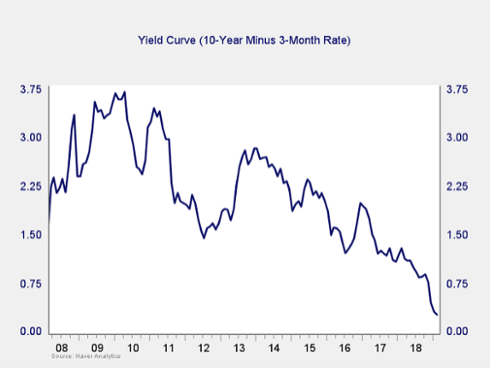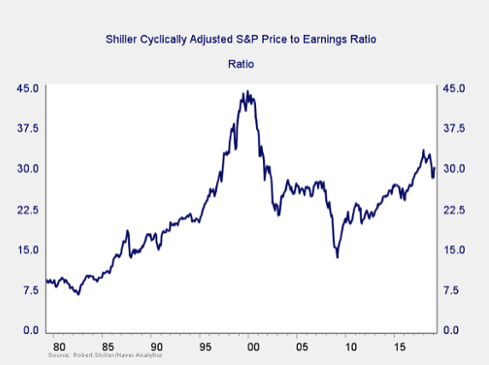The yield curve spread narrowed further in February, as longer-term rates continued to pull back on rising concerns about growth. Still, the spread remains well outside the trouble zone. As such, the immediate risk remains low, compounded by the fact that lower long-term rates are helpful economically. Given that, and the fact that the Fed has signaled a pause in rate increases, the risk level seems to be moderating. But the continued narrowing, combined with more recent market pullbacks, suggests the indicator remains something to watch. So, I am keeping this measure at a yellow light this month.
Signal: Yellow light
Market Risk
Beyond the economy, we can also learn quite a bit by examining the market itself. For our purposes, two things are important:
1. To recognize what factors signal high risk
2. To try to determine when those factors signal that risk has become an immediate, rather than theoretical, concern
Risk factor #1: Valuation levels. When it comes to assessing valuations, I find longer-term metrics—particularly the cyclically adjusted Shiller P/E ratio, which looks at average earnings over the past 10 years—to be the most useful in determining overall risk.
The major takeaway from this chart is that despite the recent decline, valuations remain extremely high. They are still above the levels of the mid-2000s, although down from recent highs. Also worth noting, however, is the very limited effect on valuations of the recent pullback in stock prices. Despite the drop, stocks remain quite expensive based on history. High valuations are associated with higher market risk—and longer-term metrics have more predictive power. So, this is definitely a sign of high risk levels.

Monthly Market Risk Update: March 2019
March 14, 2019
« Previous Article
| Next Article »
Login in order to post a comment








